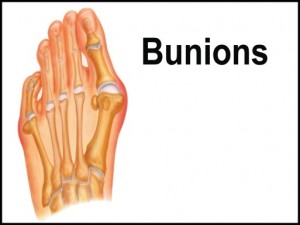 The notion of “pretty” feet goes back centuries. Today, toe-binding—a surgical procedure classified as cosmetic toe-shortening—involves removing a knuckle and pinning the toe back together to refuse the bones. It sounds like foot-binding from ancient China. The ancient process entailed creating the perfect, tiny feet in order to indicate status, for only those who were wealthy could afford to not walk or work.
The notion of “pretty” feet goes back centuries. Today, toe-binding—a surgical procedure classified as cosmetic toe-shortening—involves removing a knuckle and pinning the toe back together to refuse the bones. It sounds like foot-binding from ancient China. The ancient process entailed creating the perfect, tiny feet in order to indicate status, for only those who were wealthy could afford to not walk or work.
The comparison is certainly apt, however, according to Newsweek; there are those who are quite satisfied with their procedure. Nancy Velazquez, from Rockaway Beach in Queens is, “…honestly crazy about my toes now.” The 47-year old high school teacher indicated it was difficult to walk or even dance with her bunions and overlong toes before. Toe-shortening is usually performed alongside bunion removal in non-cosmetic surgery circumstances.
Many people know what it’s like to deal with painful and ugly bunions. For assistance with this deformity, call a podiatrist like Dr. Neal Mozen of Foot Healthcare Associates. Dr. Mozen will take a look at your bunions and make a recommendation based on their severity.
What is a Bunion?
A bunion is an enlargement of the base joint of the toe that connects to the foot. The enlargement is formed of swollen tissue or boney growth. This swelling is caused by a shifting of the bones in the big toe inward, impacting the other toes of the foot. The area around the base of the big toe may become inflamed, red, and/or painful.
Formation
Genetics – people who are susceptible to bunions are often genetically predisposed.
Stress on the feet – wearing improperly fitting shoes or running and walking with improper form may cause stress on the feet. Wearing high heeled shoes puts the weight from the body onto the toes, causing further stress and bone displacement.
Diagnosis
A podiatrist who specializes in foot structure and bio-mechanics will be able to diagnose bunions.
Blood Tests – testing the blood for gout or arthritic conditions can help identify the causes.
Radiological Exam – a podiatrist will request an exam to identify the bunion by taking a look at the bone structure. If the x-ray shows an enlargement of the joint near the base of the toe, shifting toward the smaller toes, this usually indicates a bunion.
For more information about Bunions, follow the link below.
If you have any questions, please feel free to contact our office in Southfield, Livonia, and Novi MI. We offer the newest diagnostic and treatment technologies for all your foot and ankle needs.